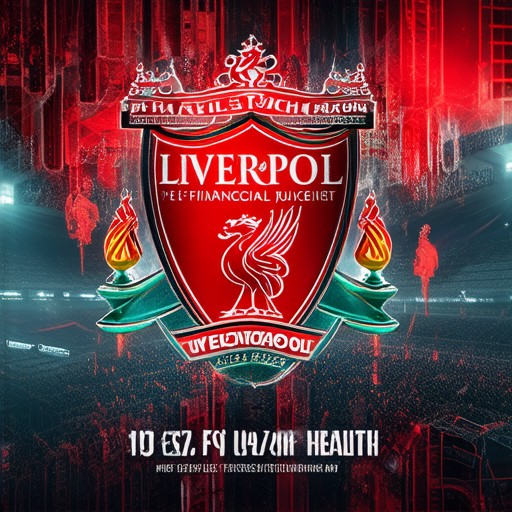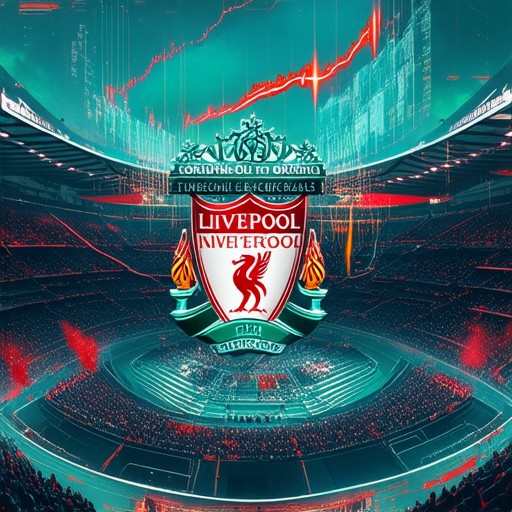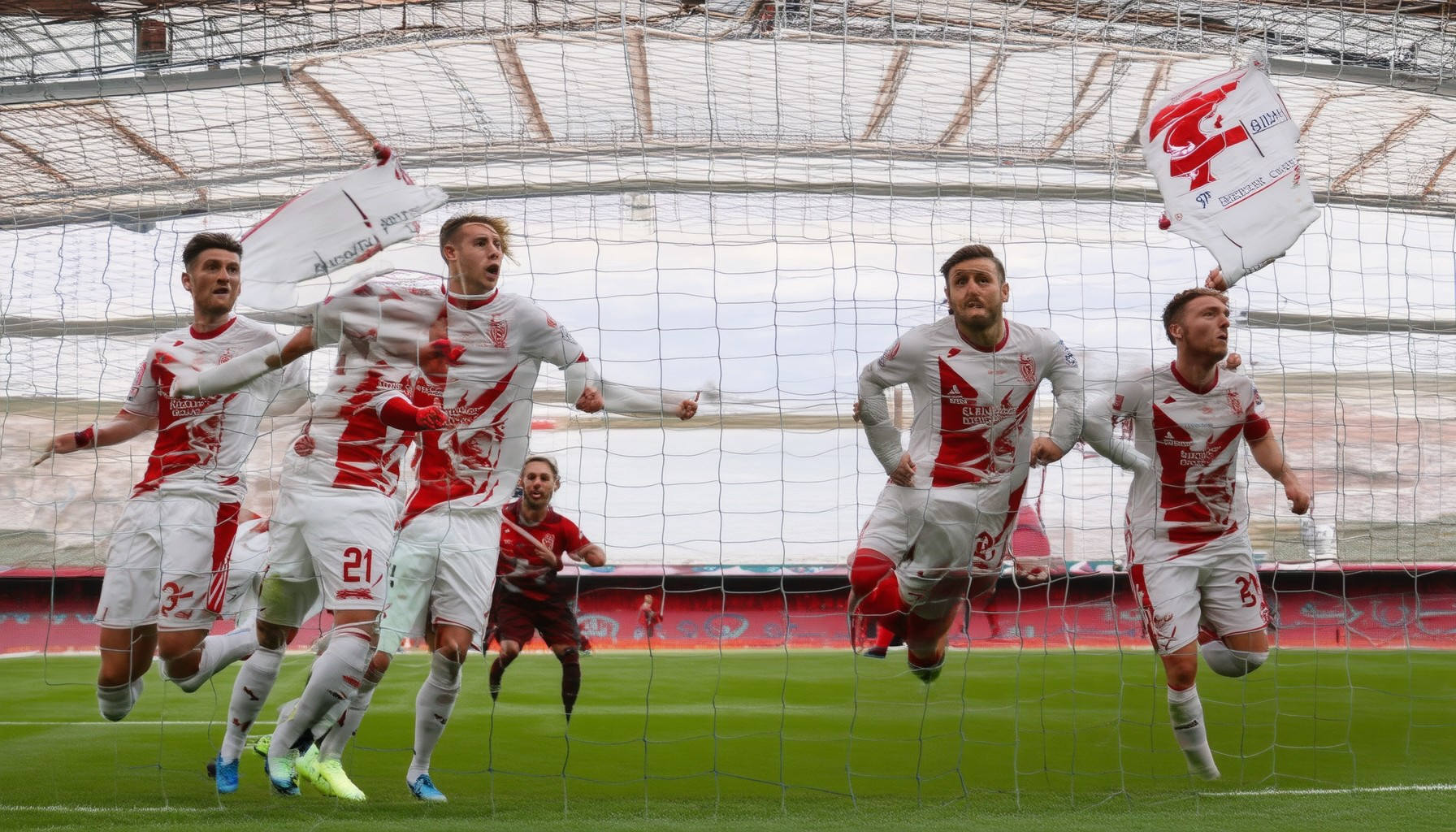As one of the most iconic football clubs in the world, Liverpool FC continues to captivate fans with their dynamic performances and strategic decisions. While their team has consistently delivered thrilling moments on the pitch, the conversation around Liverpool FC extends far beyond their match outcomes. In this comprehensive analysis, we delve into the intricate details of their financial performance, exploring how their fiscal health impacts their ability to compete at the highest level. From examining seasonal trends and match insights to evaluating their strengths and weaknesses, this exploration offers a deeper understanding of where Liverpool FC stands today. Whether you’re curious about their financial status, team dynamics, or future prospects, this article provides a holistic view of Liverpool FC’s journey through the lens of performance and sustainability.

Financial Performance of Liverpool FC
Liverpool FC reported a net loss of £57 million for the 2023-24 financial year, marking an increase from the previous season’s £41 million loss. Despite this, the club’s overall revenue reached £614 million, reflecting a £20 million rise compared to the prior year. A significant portion of this growth came from commercial income, which surged by £36 million to £308 million. This milestone represents the first time Liverpool’s commercial revenue has exceeded £300 million, driven largely by expanded partnerships and retail initiatives.
- Net Loss: £57 million (2023-24)
- Total Revenue: £614 million (2023-24)
- Commercial Income: £308 million (2023-24)
- Premier League Revenue: £614 million (2023-24)
The club’s financial strategy has been centered on diversifying revenue streams beyond matchday income, with a strong emphasis on commercial partnerships and merchandise sales. This approach has contributed to sustained growth in revenue, despite the challenges posed by the COVID-19 pandemic and competition from other top-tier clubs in European football.
For more detailed financial breakdowns and insights into Liverpool’s spending habits, including transfer expenses and operational costs, visit the official Liverpool FC financial reports on their official website .
Are Liverpool FC a Good Team?
Liverpool Football Club, commonly known as Liverpool FC or simply “The Reds,” has consistently demonstrated their status as one of the premier teams in global football. Their rich history, combined with sustained success across various competitions, underscores their reputation as a top-tier club.
Historical Success and Achievements
Liverpool FC boasts an impressive array of accomplishments. Over the years, they have secured numerous domestic titles, including multiple Premier League championships and several FA Cup victories. Their dominance extends to European stages, with six UEFA Champions League titles, marking them as one of the most successful clubs in the competition’s history.
Current Performance and Style
Under the leadership of manager Jürgen Klopp, Liverpool has continued to compete at the highest level. Their dynamic playing style, characterized by fast-paced attacks and high pressing, has made them a thrilling team to watch. Recent successes in the Champions League final and consistent top-four finishes in the Premier League highlight their current prowess.
Key Strengths
- Depth in Squad : Liverpool’s squad is packed with talent, featuring stars like Mohamed Salah, Virgil van Dijk, and Sadio Mané who consistently deliver on the pitch.
- Youth Development : The club’s academy has produced several first-team regulars, showcasing a commitment to nurturing young talent.
- Fan Engagement : Liverpool’s passionate supporter base and the club’s ability to attract global followers further cement their status as a globally recognized entity.
Competition with Elite Clubs
While Liverpool is often regarded as one of the best, they face stiff competition from clubs like Manchester United, Chelsea, and Real Madrid. These rivalries add intensity to their performances, driving them to continually raise their standards.
Liverpool FC’s legacy and ongoing success make them a standout team in world football. Their ability to consistently challenge for titles and their influence on the game both domestically and internationally solidify their position as a leading force in the sport.

Which Team Has Beaten Liverpool FC the Most?
Liverpool F.C. has faced numerous opponents in league competitions over the years, with some teams standing out for their consistent performances against the Reds. According to league records, Aston Villa has been the most frequent opponent to defeat Liverpool, with 95 losses in 194 meetings.
Manchester United follows closely behind, having secured 69 wins against Liverpool in league fixtures. Other notable teams like Chelsea and Everton have also had significant success against Liverpool, particularly due to their strong performances and historical rivalry with the Merseyside club.
For more detailed statistics and insights into Liverpool’s league record, you can refer to the comprehensive resource on their opposition performance.

Are Liverpool FC in Debt?
Liverpool FC has consistently managed its finances effectively, though like many clubs, it navigates challenges within the sports industry. Here’s a breakdown of their financial status:
- Wage Bill: Liverpool’s wage bill remains competitive, reflecting their commitment to attracting top talent. As of recent reports, it stands around £386m, showcasing investment in player salaries.
- Media Revenue Drop: The absence of Champions League football impacted their media revenue, leading to a significant decrease of approximately £38m. This highlights the reliance on European competitions for revenue streams.
- Administrative Costs: Operational expenses have risen, climbing from £562m to £600m. This increase reflects ongoing investments in infrastructure and operational efficiency.
- Bank Debt Reduction: Liverpool has successfully reduced its bank debt, dropping from £116m to £110m, indicating prudent financial management and debt consolidation efforts.
These financial metrics reflect Liverpool’s strategy to balance expenditure with revenue generation, ensuring long-term sustainability while competing at the highest level.
Are Liverpool in Financial Trouble?
As of the latest financial reports, Liverpool FC is facing significant financial challenges, primarily due to the £57m loss incurred during the 2023-24 season. This deficit arises from the club’s absence from the Champions League, which resulted in reduced revenue from that competition. Despite this, Liverpool has demonstrated resilience by managing their expenses effectively.
The club’s financial health is further evidenced by their revenue growth, which rose by £20m to £614m during the same period. Commercial revenue broke the £300m mark for the first time, reflecting strong brand value and sponsorship deals.
Liverpool’s financial strategy involves careful cost management and exploring alternative revenue streams. The club has recently focused on reducing operational costs while maintaining competitive player salaries. Their ability to secure high-transfer fees for star players has also contributed to stabilizing their finances.
Looking ahead, Liverpool’s commitment to long-term sustainability and investment in infrastructure projects, such as Anfield expansion, underscores their determination to remain financially viable. The club continues to prioritize youth development and scouting to build a sustainable team for future success.
For more detailed insights into Liverpool’s financial performance and strategies, visit The Anfield Talk , our dedicated platform for in-depth analysis and updates on all things LFC.

Which Football Club Has the Most Debt?
Tottenham Hotspur is widely reported to have the highest debt among football clubs, with liabilities exceeding £1 billion (approximately $1.4 billion USD). This debt primarily stems from the construction of their state-of-the-art stadium, Spurs’ Lane, which opened in 2019. While the club has made efforts to reduce its debt through various measures, it remains a significant figure in the football finance landscape.
Other clubs with notable debt figures include:
- Manchester United : Known for its high expenditure on transfers and infrastructure, the club has also faced financial challenges, with debt figures often in the hundreds of millions of pounds.
- Real Madrid : As one of the most successful clubs globally, Real Madrid’s financial strategy has led to significant borrowing, particularly for signings and stadium upgrades.
- Barcelona : The Catalan giants have also accumulated substantial debt, partly due to their aggressive approach in the transfer market and investments in youth development.
- Chelsea FC : Under various ownerships, Chelsea has incurred high debt, often tied to major signings and stadium renovations.
These figures highlight the financial complexities faced by leading football clubs, underscoring the importance of prudent financial management in modern football.





0 Comments